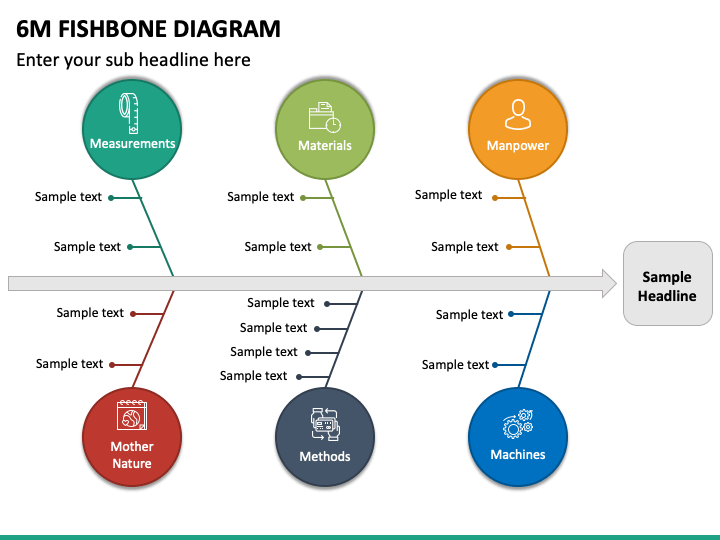

- ISHIKAWA DIAGRAM TEMPLATE POWERPOINT DRIVERS
- ISHIKAWA DIAGRAM TEMPLATE POWERPOINT DOWNLOAD
- ISHIKAWA DIAGRAM TEMPLATE POWERPOINT FREE

This type of diagram is useful in any analysis, as it illustrates the relationship between cause and effect in a rational manner. Minor branches correspond to more detailed causal factors. Each major branch of the diagram corresponds to a major cause (or class of causes) that directly relates to the effect. The primary branch represents the effect (the quality characteristic that is intended to be improved and controlled) and is labelled on the right side of the diagram. The issues in a Cause and Effect Diagram are often derived from a brainstorming session followed by the development of an Affinity Diagram. The Cause and Effect Diagram aims to show all the causes leading to some head event. It is an effective tool that allows people to easily see the relationship between factors to study, processes, situations, and for planning.

If you are having difficulty, try right clicking the link and selecting “Save Target As…” or “Save As…” to save it to your computer harddrive.A Cause and Effect Diagram (also called a Fish bone Diagram or Ishikawa Diagram) is used to provide a pictorial display of a list in which you identify and organise possible causes of problems, or factors needed to ensure success of some effort. Viewing Tip: Usually, you can click on the icon link above to view the document in a new window – it may open within your browser using the application (in this case either Word or Excel). There are two versions: Microsoft Word and Excel.įishbone Template, Microsoft Excel (.XLS)
ISHIKAWA DIAGRAM TEMPLATE POWERPOINT DOWNLOAD
The following fishbone templates are for immediate download and use. If necessary, you may also want to validate these prioritized few causes with a larger audience. A fishbone diagram, also called a cause and effect diagram or Ishikawa diagram, is a visualization tool for categorizing the potential causes of a problem in order to identify its root causes. It would be advisable to have your team prioritize in some manner the key causes identified on the fishbone. 50 fishbone/ishikawa slides for PowerPoint. Once you have the fishbone completed, you are well on your way to understanding the root causes of your problem.
ISHIKAWA DIAGRAM TEMPLATE POWERPOINT DRIVERS
This will help get you to the true drivers of a problem. For each cause identified, continue to ask “why does that happen?” and attach that information as another bone of the category branch.

Once you have the branches labeled, begin brainstorming possible causes and attach them to the appropriate branches.
ISHIKAWA DIAGRAM TEMPLATE POWERPOINT FREE
You should feel free to modify the categories for your project and subject matter. The categories you use are up to you to decide. These branches are labeled with different categories. The rest of the fishbone then consists of one line drawn across the page, attached to the problem statement, and several lines, or “bones,” coming out vertically from the main line. The team should agree on the statement of the problem and then place this question in a box at the “head” of the fishbone. To construct a fishbone, start with stating the problem in the form of a question, such as “Why is the help desk’s abandon rate so high?” Framing it as a “why” question will help in brainstorming, as each root cause idea should answer the question. Because people by nature often like to get right to determining what to do about a problem, this can help bring out a more thorough exploration of the issues behind the problem – which will lead to a more robust solution. The fishbone has an ancillary benefit as well. It is particularly useful in a group setting and for situations in which little quantitative data is available for analysis. The fishbone will help to visually display the many potential causes for a specific problem or effect. One way to capture these different ideas and stimulate the team’s brainstorming on root causes is the cause and effect diagram, commonly called a fishbone. When utilizing a team approach to problem solving, there are often many opinions as to the problem’s root cause.


 0 kommentar(er)
0 kommentar(er)
